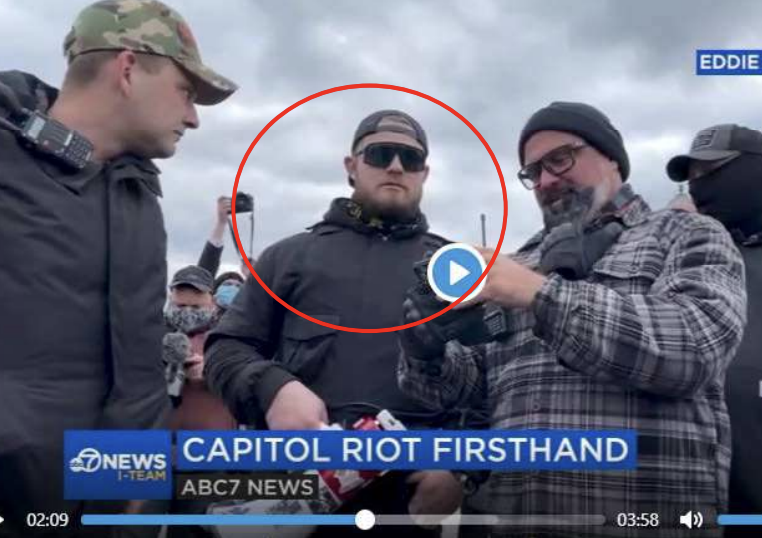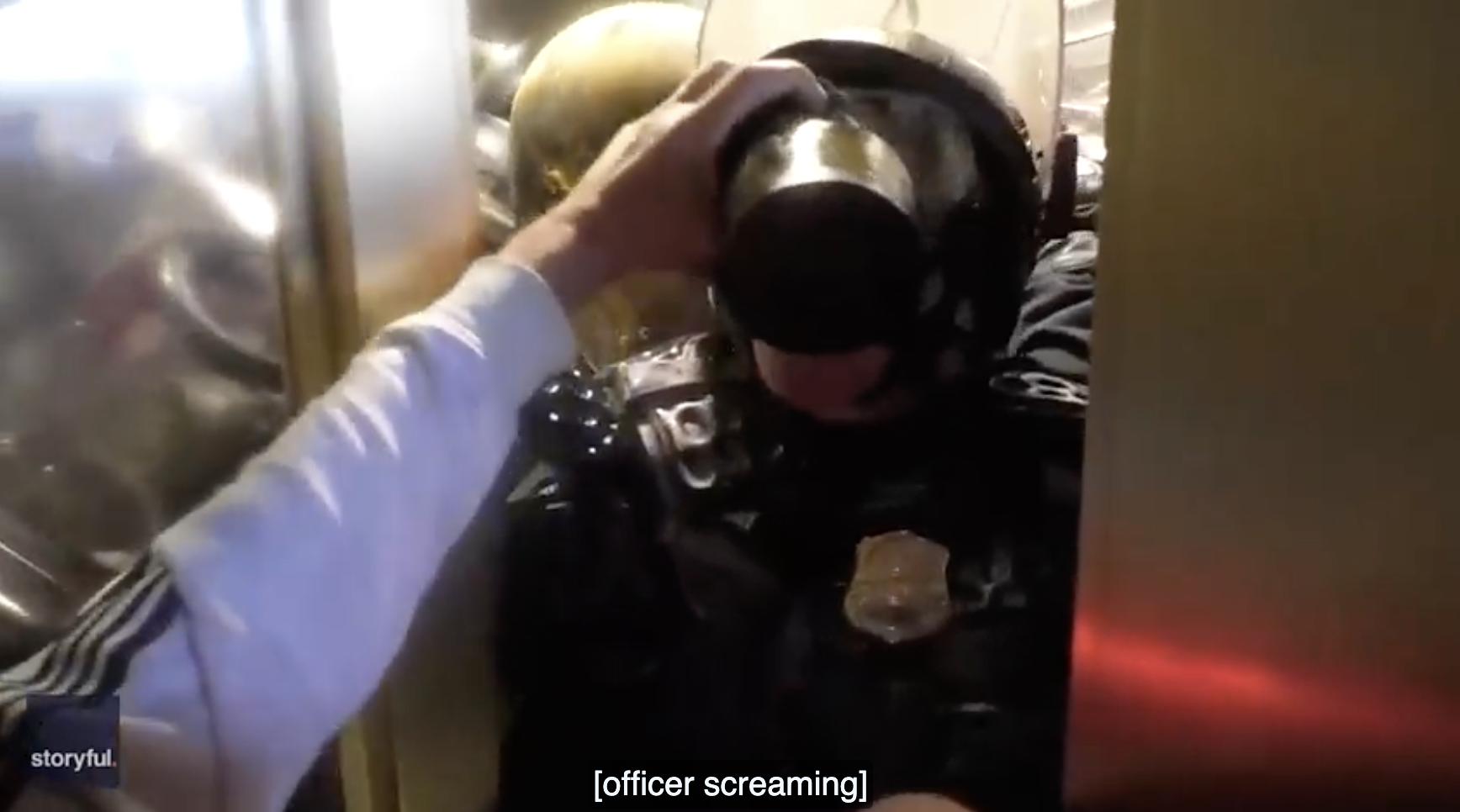Reuters Doesn’t Mention Terrorism When Claiming DOJ Won’t Charge Serious Offenses in the January 6 Investigation
Reuters has a story claiming to report that, “FBI finds scant evidence U.S. Capitol attack was coordinated,” that has elicited a lot of consternation. I’d like to look at what it does and does not say. Most of it is true — and not news — but somewhere along the way someone (either the reporters or the sources) misunderstood parts of what they’re looking at.
Reuters or its sources don’t understand how DOJ is charging this
One detail shows this to be true.
The Reuters piece makes much of the fact that DOJ is not charging what it calls “serious” charges.
Prosecutors have filed conspiracy charges against 40 of those defendants, alleging that they engaged in some degree of planning before the attack.
They alleged that one Proud Boy leader recruited members and urged them to stockpile bulletproof vests and other military-style equipment in the weeks before the attack and on Jan. 6 sent members forward with a plan to split into groups and make multiple entries to the Capitol.
But so far prosecutors have steered clear of more serious, politically-loaded charges that the sources said had been initially discussed by prosecutors, such as seditious conspiracy or racketeering.
[snip]
More than 170 people have been charged so far with assaulting or impeding a police officer, according to the Justice Department. That carries a maximum sentence of 20 years.
But one source said there has been little, if any, recent discussion by senior Justice Department officials of filing charges such as “seditious conspiracy” to accuse defendants of trying to overthrow the government. They have also opted not to bring racketeering charges, often used against organized criminal gangs.
Not once does the story mention obstruction, which also carries a maximum sentence of 20 years. If you don’t mention obstruction — and your sources don’t explain that obstruction will get you to precisely where you’d get with a sedition charge, but with a lot more flexibility to distinguish between defendants and a far lower bar of proof (unless and until judges decide it has been misapplied) — then your sources are not describing what is going on with the investigation.
Furthermore, Reuters purports to rule out “more serious, politically-loaded charges,” but it never mentions terrorism.
One reason it wouldn’t, though, is because for domestic terrorists, you don’t charge terrorism, you charge crimes of terrorism or you argue for an enhancement under U.S.S.G. §3A1.4 at sentencing. And that has and will continue to happen. For example, both the Oath Keepers and Proud Boys conspiracies include 18 USC 1361 charges (damage to a government building exceeding $1,000, a charge that is a bit of a stretch for the Oath Keepers) that constitutes a crime of terrorism, and the government has raised that and noted it is a crime of terrorism in a number of bail disputes. Effectively, DOJ has already called the leaders of the militia conspiracies terrorists. But Reuters doesn’t think that’s worth noting.
Similarly, for both the assault pleas DOJ has obtained thus far, the government has reserved the right to invoke a terrorism enhancement at sentencing. In the case of Scott Fairlamb, who also pled guilty to obstruction, which effectively amounts to pleading guilty to having a political purpose for his assault, I suspect such an enhancement is likely.
Somehow this entire story got written without mentioning what DOJ is using instead of seditious conspiracy: obstruction (which has been charged against over 200 defendants) and terrorism enhancements; civil disorder is likewise not mentioned, but has been charged against around 150 defendants. DOJ isn’t using seditious conspiracy because it doesn’t need it (again, unless and until the courts reject this use of obstruction).
Reuters mis-describes the Proud Boys’ role in the riot
Much of the rest of the story includes details that are true, and public, but arguably misleading.
A “former senior law enforcement official” (most former senior people who had visibility on the investigation have been gone for some time) claims that 90 to 95% of these cases are “one-off” cases, seemingly distinguishing between the 40 people Reuters describes to have been charged in conspiracy from the 540 or so who have not been charged with a conspiracy.
“Ninety to ninety-five percent of these are one-off cases,” said a former senior law enforcement official with knowledge of the investigation. “Then you have five percent, maybe, of these militia groups that were more closely organized. But there was no grand scheme with Roger Stone and Alex Jones and all of these people to storm the Capitol and take hostages.”
On paper, that’s true, and in key places a really important detail. But in other places it doesn’t mean what Reuters suggests it says.
For example, consider the nine men charged in the assault of Daniel Hodges. None of them knew each other before they started beating the shit out of some cops in the Tunnel of the Capitol. But several of the men charged nevertheless managed to orchestrate the assault (indeed, that’s most of what David Mehaffie did do — make other assailants more effective) and so, even while these individuals did not conspire to beat the shit out of cops, they worked in concert when they did so. The same is true for the men jointly accused of assaulting Michael Fanone (though Daniel Rodriguez has not been charged with the other men involved, many people believe because he’ll be charged in a conspiracy with others from Southern California).
Plus, the number cited to Reuters is probably wrong. Ten percent of the 580 people charged would be around 60. There were that many people on the Proud Boys’ organizational Telegram channel that day (though not all those people were present). There are a bunch of Proud Boys already charged individually, including some (like Dan Scott) who could easily be added to existing conspiracy indictments, others charged as groups (like the five Floridians on the Arthur Jackman indictment), and a father-son pair Jeffrey and Jeremy Grace who just got a terrorism prosecutor added. There are five Oath Keepers not included in that conspiracy (four cooperating against the others). And DOJ is only beginning to unwind the 3%er networks involved. So even just considering militias, the number is likely closer to 80.
And there are other important affiliations represented at the riot — with QAnon and anti-maskers being two of the most important — that actually created networks that were in some ways more effective than the militias. The QAnoners didn’t conspire with each other but they sure as hell were directed from the same place. And anti-mask protests were actually one place where a goodly number of rioters were radicalized, and those localized networks manifested as cells of cooperation in some key incidents in the riot.
More importantly, this claim can only have come from people who misunderstand what the investigation has shown:
Prosecutors have also not brought any charges alleging that any individual or group played a central role in organizing or leading the riot. Law-enforcement sources told Reuters no such charges appeared to be pending.
Conspiracy charges that have been filed allege that defendants discussed their plans in the weeks before the attack and worked together on the day itself. But prosecutors have not alleged that this activity was part of a broader plot.
It’s true that the Proud Boys are not known to have had a detailed plan describing who would move where in the Capitol. But it’s also true that both before and after the riot, the Proud Boys discussed mobilizing the “normies,” because normies have no adrenalin control. And the Proud Boys’ success at doing this is what made the initial assault on the West side of the Capitol work (and therefore the attack generally). The Proud Boys weren’t ordering the 1,000 rioters what to do at each step (though probably 100 people at the riot had some interaction with the Proud Boys), but they did give the riot a kind of structure that was crucial to its success.
Maybe Roger Stone isn’t involved?
Because of the other problems with this article, I don’t know what to make of the single piece of news in it. As noted above, a former senior law enforcement official claims that, “there was no grand scheme with Roger Stone and Alex Jones and all of these people to storm the Capitol and take hostages.” That makes sense with respect to Alex Jones; his videographer was arrested long ago and remains charged only with trespass.
But Stone has continued to appear in Oath Keeper filings long after the time that someone very senior would have left. And the two cooperators who might confirm or deny Stone’s involvement — Graydon Young (who did an Oath Keeper event with Stone in Florida) and Mark Grods (who was present with the Oath Keepers who were with Stone the day of the attack) — only pled guilty at the end of June, meaning if they confirmed Stone wasn’t involved (even in the planning for the attack known to have taken place in December, in Florida), it wouldn’t have happened all that long ago.
Particularly given the mention of kidnapping — which was a real question at the beginning of the investigation because of the zip ties that Larry Brock and Eric Munchel picked up inside the Capitol — this seems like a denial of a very dated misunderstanding of what happened.
I don’t think this story is meant maliciously. For example, I’m unimpressed with concerns raised about Tass’ ownership; this is Mark Hosenball and he’ll do the same reporting regardless of who signs his paycheck. Nor am I all that concerned by the anonymity of the sources; I’m more interested in how dated some of this information might be and which corners of the sprawling investigation those who actually worked on it were personally involved with.
It reads like the end result of a game of telephone asking questions that were raised in January, not a report about the investigation as public filings reveal it to be in August.
Update: DOJ just charged InfoWars host Owen Shroyer. The initial charges are just trespassing (leveraging a prior charge and Deferred Prosecution Agreement he entered), but he’s likely to be charged with obstruction based on stuff in his arrest affidavit.


